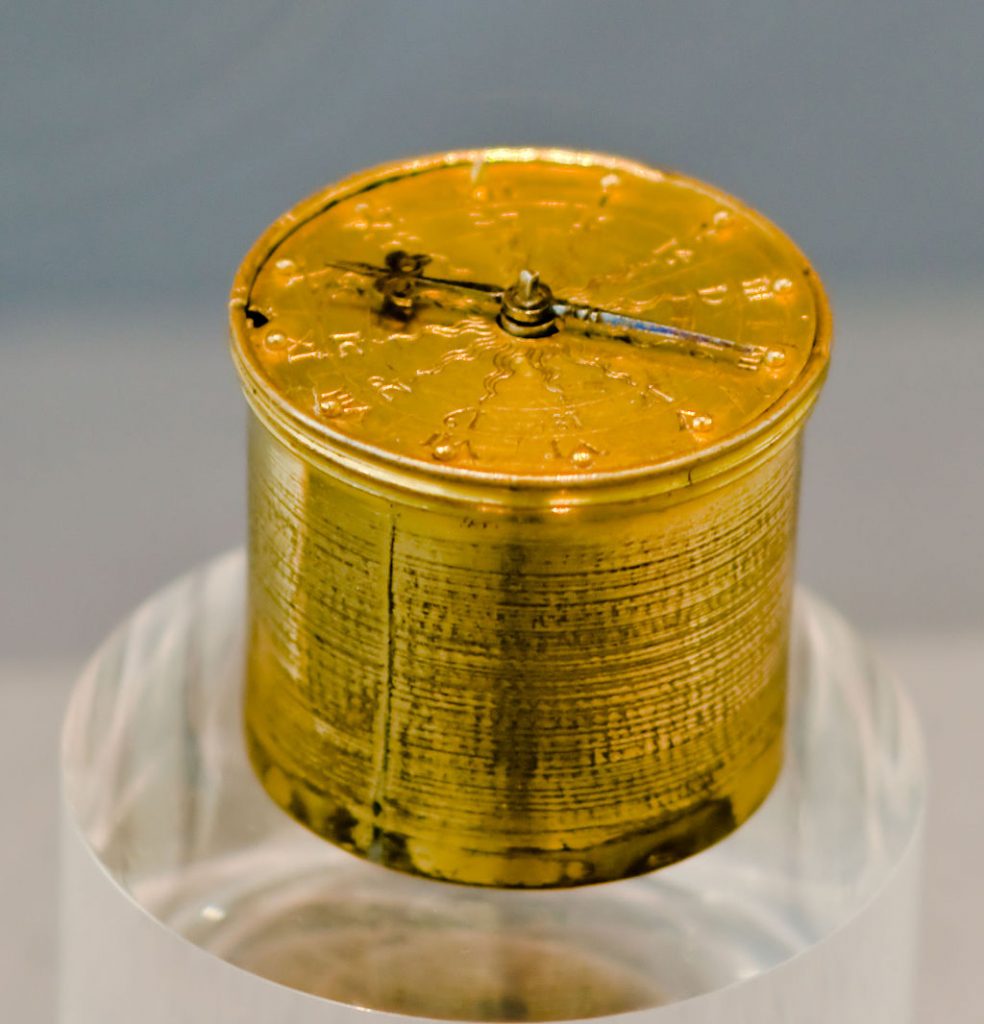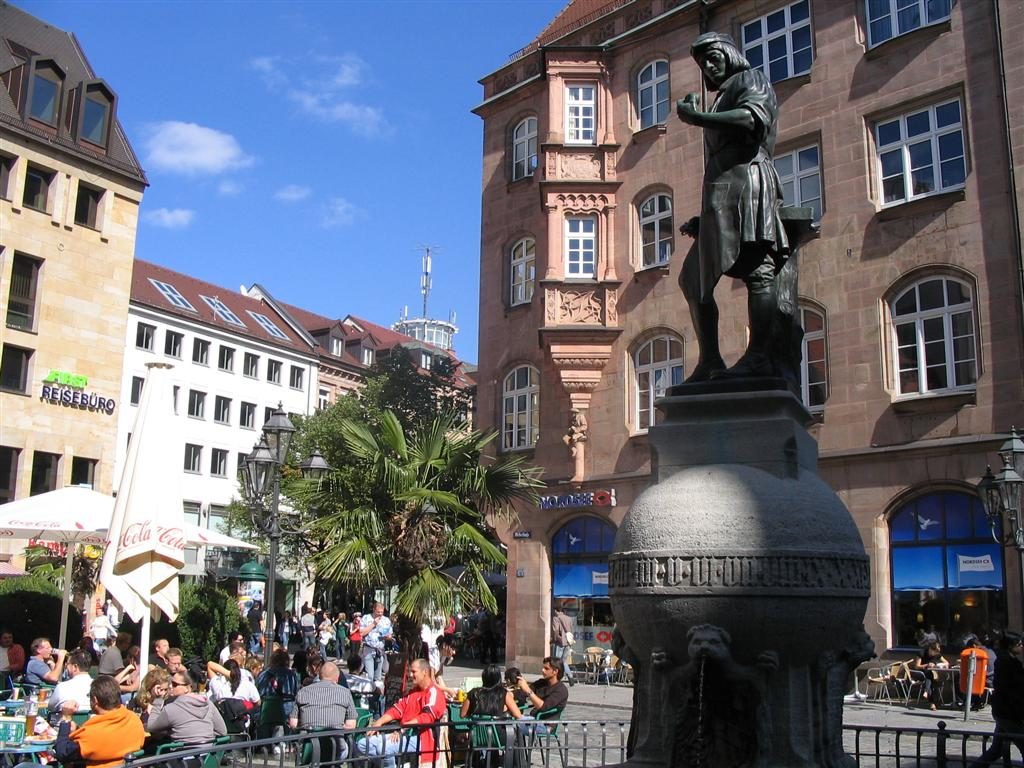Nuremberg egg by Nuremberg clockmaker Peter Henlein
Nuremberg egg is a very special clock made in the late 16th century. It is a small egg-like clock that works like the watches were working once upon a time. It’s an ornament, spin-driven watch made for those who had enough money to buy it for themselves, or as a present for the loved ones.
The hardest part to make from this little clock was the torsion pendulum, which on a big scale was in every clock in those time, but to make it that small to fit someone’s pocket was real magic during those days. The first clock made to work like that was big as a part of the closet, but only in Nuremberg were trying to make it that small it could fit as a pendulum over the neck, and not look too big.

Making of “Nuremberg eggs” was a hard task because everything in it had to be made as minimum as possible but still had to work by winding once or in the best case twice a day.
Nuremberg egg – invented by Peter Henlein

At that time Nuremberg’s clockmaker was Peter Henlein who lived to 1542, but he made the smallest clock for those days in 1505 to 1510 when it was finished, and there were only small outside changes, but inside it was real work of art, making the parts that small that can fit on a thin golden chain that was around the neck.
For those times, the wind-up clock was a brand new thing, but there were small wind-up clocks that were made almost a century ago. In 1430 the Duke nicknamed Phillip The God ordered the smallest possible clock for himself, but it was a different shape and bigger in size.
Not only that, but the clock could only tell just hours, but not the minutes, thus giving you the approximate time in one hour.
For those days it was a real picture of the wealth of one person, and a memory for the of someone dear to you with a lot of money to buy it for you.
In those days in Nuremberg were made in three ways.
One was cylindrically shaped, named ‘Dosenuhr’ made for carrying in the purse or leaving at the table in the centre of it.
The other one was a flat cylindrical wind-up clock made for carrying around the neck, or around one’s hand, with a chin of gold that could support it. Some times, it was on a cord and hidden from prying eyes to keep a hidden memory of someone, and it was not shared with everyone.
The third one was made like a sphere, especially small watches for around the neck of a wrist, named ‘Bisamapfeluhr’ and they looked like pomanders, so it would look more like a pendant than a clock.
Not only that these clocks are a real mystery because of the technology for those days, but they are also really rare to find or see, even in some major museums there is no trace of them, despite that they were really popular in the 1580s. But when in Nuremberg, there is a wast collection of these clocks, from really round ones, that look more like a small ball rather than an egg, to those so small that anyone would be amazed to see the miniature clock from 16th century, and it would be an honour having one of them in the museum near you.
The word Eierlein means ‘small eggs’, so the real Nuremberg small eggs were most times oval-shaped, like a real small egg.
To these days no one knows who made such small parts for these tiny clocks, or who made the tools that tiny, that could make and complete this small clock, from which some of them still work.
The inventor of these small egg clocks was Peter Henlein who was a locksmith in Nuremberg. The invention of these small clocks is considered as the first wrist-worn clocks in history. The actual name egg clock was presented later at the end of the 16th century ( around 1580 ) because then they were widely used around the whole country, but the first one cylindrical clock was made in 1530 in Nuremberg.
Sadly, like most of the artists, Henlein was dead for more than 30 years, when his egg clocks became famous. By forgetting the artist who made those clocks went more than enough time for his name to be forgotten, and to use something that clock actually looks like, thus the name, the egg clock.
Also, the first clock that you can carry to another place, not that small, but still smaller than big clocks that go sometimes to the roof, was made by the same man in 1510, and his first written sale of one of smallest clocks is in 1524. It was gilded Pomander which is a special perfume-box that looked just like it, only it was a small gilded clock.
It cost 15 guldens and it was sold to the city of Nuremberg. Today we know that clocks like that, the pomander watch does not exist anymore, there are left just 2 of them and both are in museums. One dates from 1505 and the other is from 1524 and the one that Henlein made in 1524 is now in Walters Art Museum, Baltimore.
The only sure thing is that no one knows how did they make such small clocks, that worked, with such small parts that most of them were smaller than 5 millimetres. From the whole 16th century until today it stays a mystery.
Nuremberg egg ( IT: Uova di Norimberga )


